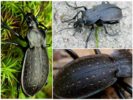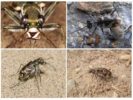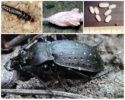- Ground beetle of the genus Circus
- Horse Beetles
- Breeding black large ground beetle
With a very beautiful dark-bronze beetle, many lovers of garden work had to face. Usually it is found in the soil during harvesting of a suburban area from last year's leaves or from heaps of harvested tops. This is nothing but the black ground beetle (Carabus hortensis). Insect belonging to the order of beetles. Representatives of this family are widely distributed in Russia, Europe and the Caucasus.
Circus and Carabus
Ground beetle - the inhabitant of vegetable gardens and gardens is a fairly large beetle (adult body length reaches 3 cm). This is a very elegant insect, in which all parts of the body are separated from each other. This is how a representative of the genus Carabus looks like:
- the body surface, black with a bronze tint, has a beautiful metallic tint;
- along the elytra, grooves with yellow dots can be seen.
Garden defenders also include ground beetles genus circus, the description of which differs only in smaller body sizes. The structure of the body and the black color are similar to the above individuals. A photo of the black garden ground beetle is presented below.
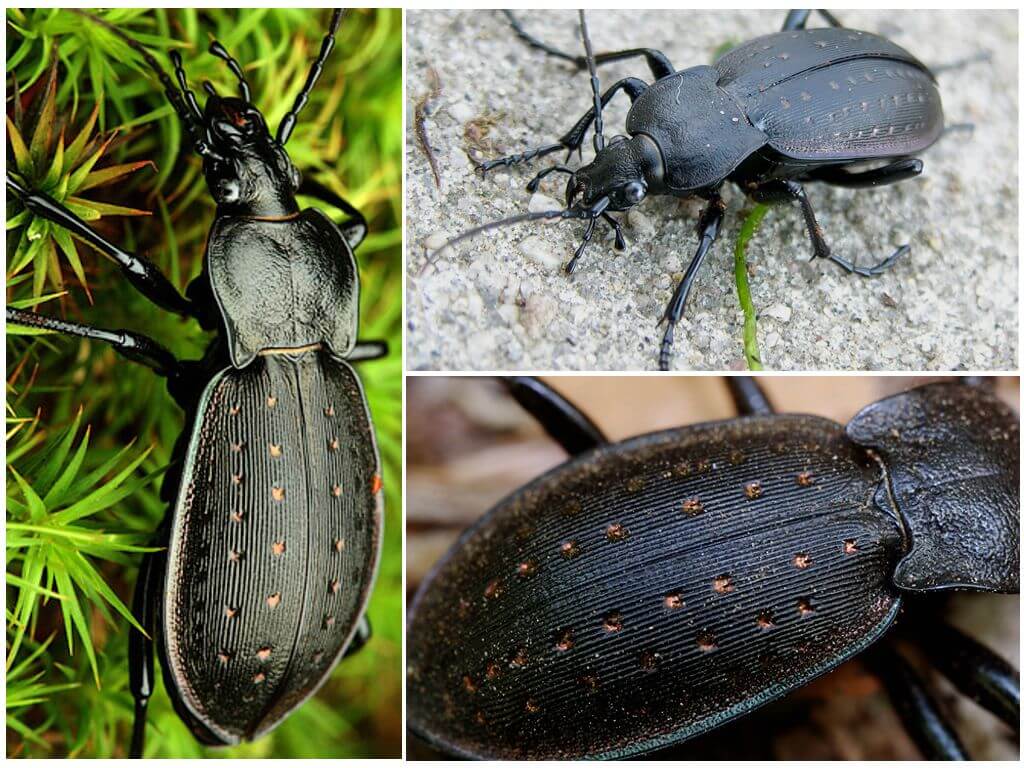
Individuals of these species belong to carnivorous insects, and therefore have powerful sickle-shaped jaws. Another feature of black predators is their rather long limbs, allowing them to travel long distances in search of food. By these signs, it is possible to distinguish predatory beetles from malicious ones, a vivid example of which is ground beetle. The main enemy of winter crops has shorter legs and less developed mandibles.
On a note!
Representatives of both genera are nocturnal. They prey on slugs, caterpillars and other harmful insects, as well as their larvae and pupae.
When attacking a victim, beetles clamp it with their jaws, releasing a special liquid dissolving the surface of the body. Due to this, the victim takes the form of a semi-liquid nutrient substance. In this form, ground beetle is garden black and absorbs food.
Horse
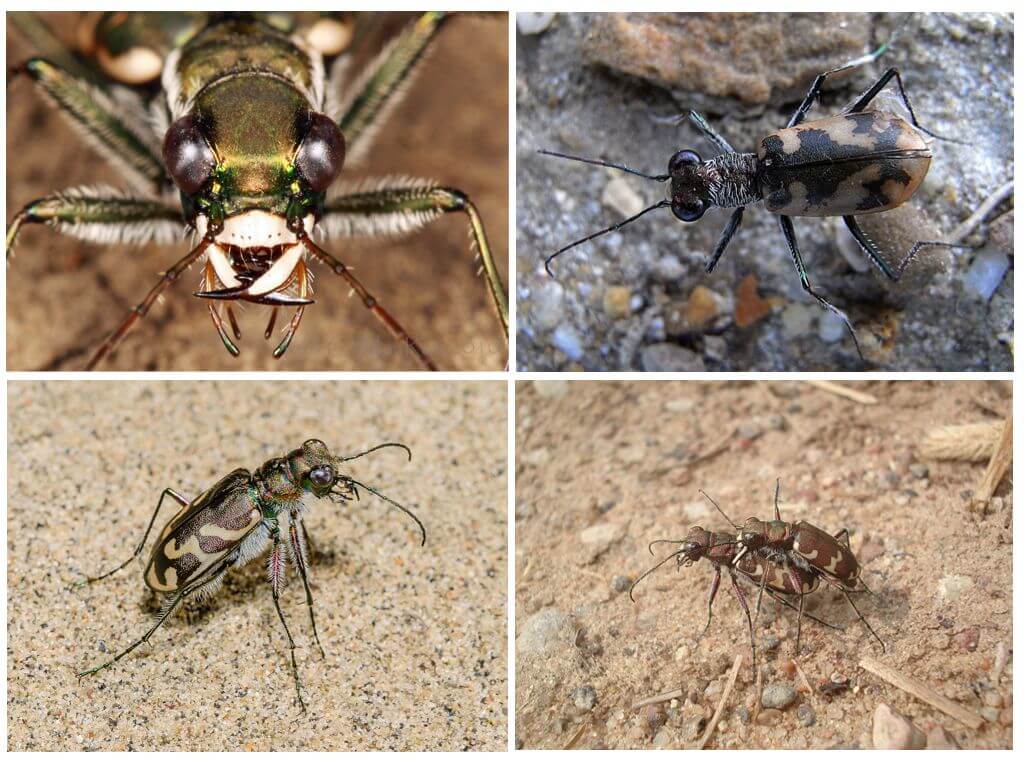
Another genus of garden ground beetles. A distinctive feature of horses is a wide head and fairly sharp protruding jaws. Beetles have a motley color. They are active in the daytime, quickly moving on the ground in search of food. In times of danger, they can fly over short distances.
Interesting!
For all its elegance, ground beetle is a predator. It feeds on caterpillars, snails, slugs, as well as leafworms and other pests. During the season, one individual is able to destroy more than 300 pests.
How to breed
The black large ground beetle lives about 3 years. In the presence of favorable conditions, the duration of the insect can reach 5 years.
After fertilization, the females lay eggs in the soil (from 50 to 100 pieces), of which after 2 weeks a worm-like larvae appear. Like adult insects, they possess three pairs of relatively long limbs, which allows them to move quickly to find food. Moreover, ground beetle larva is much more gluttonous than an adult insect. By autumn, an already mature individual will appear from it. During their life, beetles breed at least 2 times.
On a note!
Black ground beetle has quite powerful jaws, which are quite capable of biting even human skin. But it is not capable of injecting poison into the wound, in the absence of one. Therefore, a sting of a ground beetle in itself does not pose a serious threat to human life.
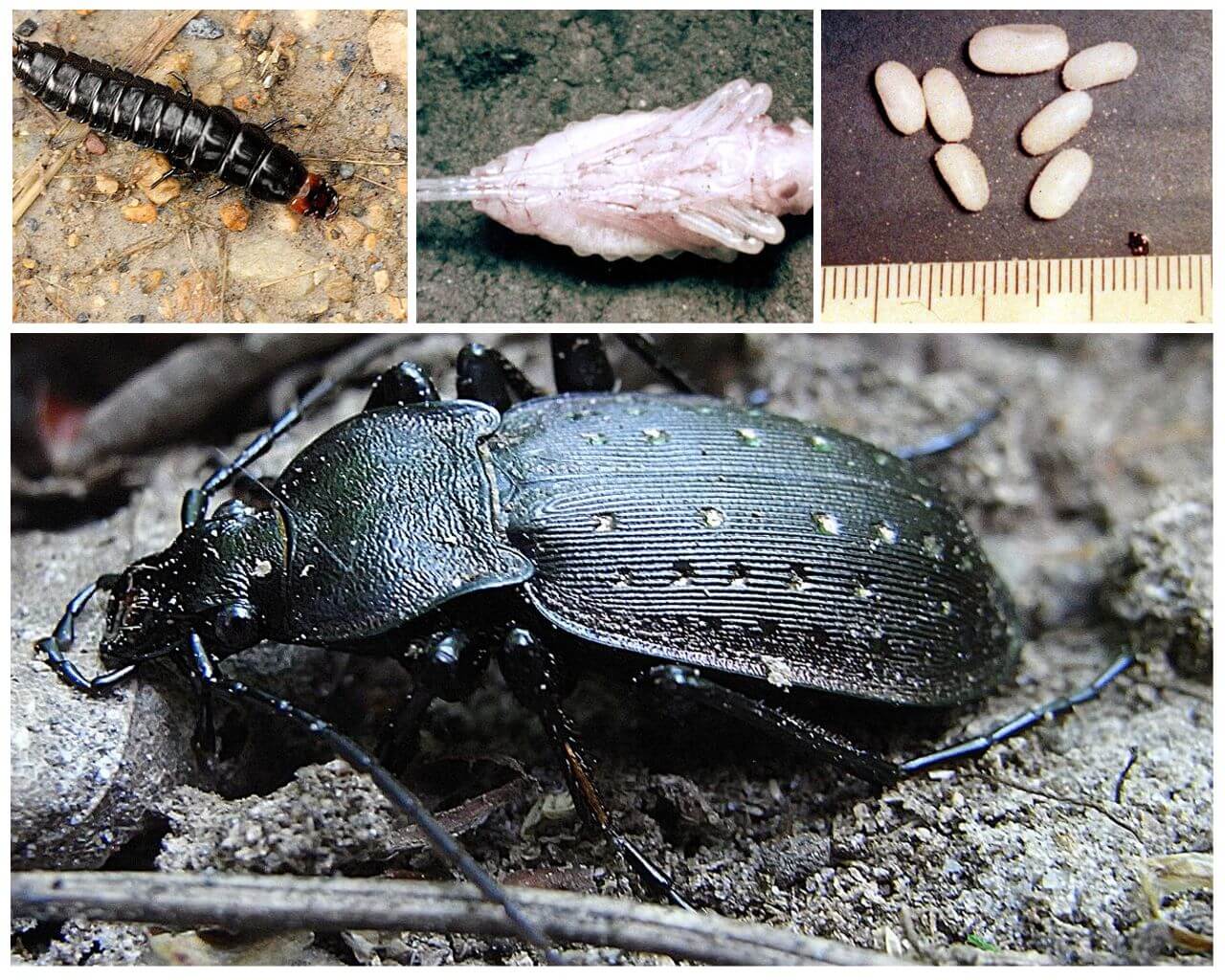
However, in some situations, black ground beetle is very dangerous for humans. It is undesirable to take the beetle in your hands, because at the time of protection it releases a caustic liquid with an unpleasant odor. The consequence of getting such a composition on the skin will be a burn, if the liquid gets into the eyes, serious vision problems can occur.
Benefit or harm
Not everyone knows that the black big ground beetle is a very useful bug. It is necessary not to fight it, but to try to increase the number of insects in every possible way. Significant reduction of insects is promoted not only by their natural enemies: various birds, moles, shrews and lizards. The disappearance of black beetles is also affected by the use of pesticides. Therefore, if necessary, it is preferable to use decoctions and infusions based on plants, as well as baits and preparations with a narrowly targeted effect.
Important!
Among a huge family, only ground beetle capable of harming agricultural land. It damages cereal crops by nibbling young seedlings.
No less dangerous is the insect larva, which attacks the ears at the time of grain maturation. Favorite treats for pests are wheat, barley, rye, and corn. A large number of such bugs can significantly reduce productivity.
